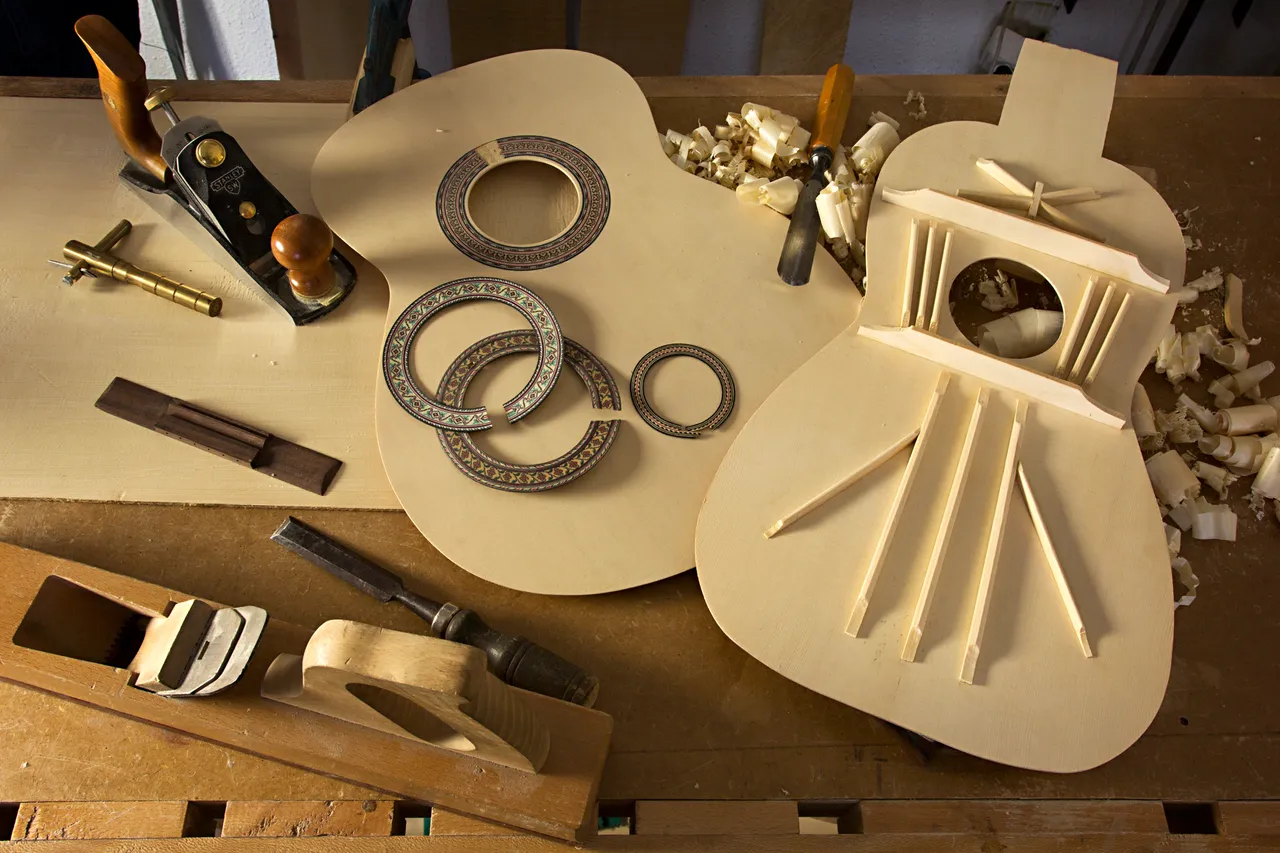Knowing the Classical Guitar
This is a plucked string instrument and is composed as follows.

The Classical Guitar is very popular for its resonance, form and style. But what gives all that to the Classical Guitar?
The answer to that question is in the materials that are used and the methods of construction. Mainly, the Classical Guitar acquires its resonance of the type of wood used in the construction which can be Ash wood, Maple, Mahogany, etc., all depending on the sound you want to give it. It is also necessary to take into account its construction, since depending on this, it is the way in which the sound will hit the walls of the Classical Guitar to resonate and to last in periods of time.

On the other hand, this instrument uses 6 strings of which the first 3 are of nylon and the last 3 of metal (the strings are counted / listed from bottom to top). The Guitar by standard is tuned in EADGBE, which is an American cipher with which the notes are represented.

The tuning of the guitar looks as follows:
6th string: E
5th string: A
4th string: D
3rd string: G
2nd string: B
1st string: E
Tuning the guitar
The standard tuning of the guitar is at 440 Hz, which means that the note A located on the 1st string, 5th fret, has a frequency of 440 Hz.
There are several types of tuning, everything depends on the taste of each person and what is needed. The most common and by default is the tuning in E, we also have the tuning in drop D or in drop C. Example:

Tuning methods.
Through 5th space.
To be able to use this method, you need to have at least a single string tuned in its corresponding pitch. For example, let's take the 5th string, which we will have tuned in A (La):
To tune the 6th string, we will press it in the fifth space and through its pin, we will take it to the same pitch as the 5th string (A) to the air.
For the 4th string, we will press the 5th string in the space number 5 and we will take the 4th string to the same pitch as the 5th string played in the 5th space.
For the 3rd string, the 5th space of the 4th string will be pressed and the 3rd string will be taken to the current tone emitted by the 4th string.
For the 2nd string, the 4th space of the 3rd string will be pressed and the 2nd string will be taken to the tone of the 3rd string pressed in the 4th space.
And for the 1st string, the 5th space of the 2nd string is pressed and the 1st string is taken to the tone emitted by the 2nd string pressed in the 5th space.
Through natural harmonics.
What are natural harmonics?
They are sounds produced by stringed instruments, which are divided into natural harmonics and artificial harmonics. For this section, only the natural harmonic will be spoken, which is produced by rubbing or touching the rope on different areas along the mast. This produces a sweet and gentle sound, so to speak, compared to the rest of the sounds that the string instrument emits, with which multiple configurations can be made, such as: tuning, calibrating, etc.
For tuning using harmonic tones, it is necessary, as in the previous case, to have at least one tuned string. For example, let's take the 6th string, which will be tuned in E (Mi):
To tune the 5th string, we will keep a finger on the 5th fret (without pressing it, just touch it) of the 6th string, another finger on the 7th fret of the 5th string and through the 5th string's pin, we will take it to the same tone as the 6th string emits.
To fine-tune the 4th string, we will keep a finger on the 5th fret (without pressing it, just play it) of the 5th string, another finger on the 7th fret of the 4th string and through the 4th string's pin, we will take it to the same tone as the the 5th string emits.
To tune the 3rd string, we will keep a finger on the 5th fret (without pressing it, just touch it) of the 4th string, another finger on the 7th fret of the 3rd string and through the 3rd string's pin, we will take it to the same tone as the 4th string emits.
To tune the 2nd string, we will keep a finger on the 7th fret (without pressing it, just touch it) of the 6th string and by means of the 2nd string's pin, we will take it to the same tone that the 6th string emits (the 2nd string must be at air, that is, without pressing any space and without touching any string).
To tune the 1st string, we will keep a finger on the 5th fret (without pressing it, just touch it) of the 2nd string, another finger on the 7th fret of the 1st string and through the pin of the 1st string, we will take it to the same tone as the 2nd string emits.
Other methods.
Other methods of tuning, is through instruments such as the tuner of string instruments. Which is very useful, since it records the frequency with which the cord undulates and indicates if it should be tightened more or its tension decrease (through the pegbox), to reach the desired frequency. (Each musical note works on a specific frequency). For example, in standard tuning, we have:

